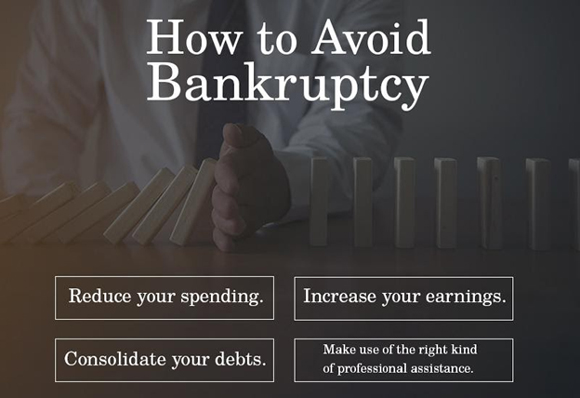Bankruptcy is a legal procedure that allows businesses and individuals to be free of their debts. When a person or organization is unable to cover their current liabilities or make payments to the creditors, he declares bankruptcy.
The process for bankruptcy occurs when either the debtor or a creditor files a petition. Debtors are entities that owe money. The debtors who owe loans to financial institutions are called borrowers. A creditor is a person or organization that lends money to other people or businesses. Creditors include banks, credit unions, and online lenders. Debts owed to creditors that are not paid in full are discharged for the debtors.
Due to bankruptcy debts owed to creditors that are not paid in full are forgiven to the debtors, while creditors get the opportunity of recovering a portion of the debt from the individual’s or business’s liquidated assets.
All bankruptcy cases in the United States are resolved by bankruptcy judges in federal courts. In the proceeding, a trustee represents the debtor’s estate.
Bankruptcy can be classified into several types, each of which is denoted by a chapter in the United States Bankruptcy Code.
Types of Bankruptcies
Despite the fact that the eventual objective of bankruptcy is to dissolve debt, not all bankruptcies are made equal. In fact, there are six different kinds of bankruptcies that should be considered separately:
Chapter 7 is called “straight bankruptcy.”
Chapter 13 bankruptcy acknowledges the debt.
Chapter 11 is used to reorganize a company or business.
Chapter 12 aids farms and fisheries in the creation of a new plan with creditors.
Chapter 15 addresses international bankruptcy issues.
Chapter 9 is a way for municipalities to get the financial assistance they require.
Chapter 7 bankruptcy is one of the most frequent types of debt relief for the average American. Debtors with low income and little resources are more likely to file for Chapter 7 bankruptcy that relieves the individual or entity of the liability to pay off their debts. Unsecured debts, such as credit card debt, medical bills, and unsecured personal loans, or payday loans are generally discharged by a Chapter 7 bankruptcy.
Chapter 7 determines whether you have enough assets to sell and repay a reasonable portion of what you owe to creditors. However, the majority of Chapter 7 bankruptcies are no-asset cases, which means there is no property of sufficient value to sell.
Individuals and businesses may file for Chapter 13 bankruptcy before filing for Chapter 7. It enables people with ordinary earnings to create a plan to pay back all or a portion of their debts. Chapter 13 bankruptcy is also called “wage earner’s plan.” Unlike Chapter 7, Chapter 13 enables to keep assets and work on any non-bankruptcy debt.
Chapter 11 bankruptcy is much less popular and is meant for large companies not for individuals. This type of bankruptcy is also known as “reorganization bankruptcy” because filing for Chapter 11 bankruptcy allows a company to develop profit-oriented strategies, cut costs, and find new methods to increase earnings.
In the United States, Chapter 12 is a type of bankruptcy that is specifically designed for farms and fisheries. It enables them to restructure their debt and finances while remaining in compliance with their creditors. To file Chapter 13, farmers and fisheries must meet a number of criteria, including debt limits and income-debt ratios.
When a country other than the United States is engaged in a debt obligation Chapter 15 bankruptcy helps to account for these one-of-a-kind circumstances. A representative in a bankruptcy case filed outside the United States can use Chapter 15 to gain access to the U.S. bankruptcy court system. In 2005, Chapter 15 bankruptcy was added to the law to address cross-border cases involving debtors, assets, creditors, and other parties located in more than one country.
Chapter 9 bankruptcy is primarily used by municipalities such as cities, towns, and school districts. Municipalities are not required to sell the property to repay their debts under Chapter 9 but are instead allowed to develop a repayment plan over time. Chapter 9 has four eligibility requirements. The municipality must
- be licensed to apply for Chapter 9 under state law,
- be bankrupt,
- want to implement a debt-reduction strategy,
- negotiate in good faith with its creditors.
How to Avoid Bankruptcy

Filing for bankruptcy can have a serious effect on your financial future, which is why people should take the following precautions to avoid it:
- Reduce your spending.
- Increase your earnings.
- Consolidate your debts.
- Make use of the right kind of professional assistance.
Bottom Line!
Declaring bankruptcy can harm your credit score, making it more difficult to obtain a loan, mortgage, or credit card. Thus, try to avoid it by taking proactive steps to keep your life in order. In any case, you can take a second loan at shinyloans to pay off the first one.